Yukon River Chinook Rebuilding and Ecosystem Strategy
This domestic rebuilding strategy is the overarching strategy that lays out the framework for common priorities, actions, and areas for collaborating to rebuild Yukon River Chinook salmon stocks. It strives to increase/strengthen protections and bring salmon back to their spawning grounds in a quantity and quality that supports ecosystem values, First Nation culture, and harvest.
Workshops
Workshops are held twice per year and are attended by Yukon First Nations, Yukon Salmon Sub Committee (YSSC), Yukon First Nation Salmon Stewardship Alliance (YFNSSA), Yukon Government (YG), Department of Fisheries and Oceans (DFO) Canada, local knowledge holders, and consultants.
Facilitation
West Coast Aquatic (WCA) is a non-profit organization funded by DFO to serve as an independent third-party facilitator of the strategy development process.
Steering Committee
The Steering Committee is responsible for overseeing and guiding the direction of action and encouraging collaboration. The committee members consist of First Nations technical representatives, YFNSSA, YSSC, DFO, and YG.
‘Action While Planning’ Working Groups
'Action While Planning’ working groups have been established to act on priorities identified to help salmon in the short term, for the long term and while working to complete the plan. There are four working groups that have been established following the spring 2024 Workshop to address priority actions:
- Habitat Data and Monitoring – Undertake habitat data and research activities, specifically focused on identification of juvenile salmon overwintering habitats, standardization of temperature monitoring, and identifying cold water refugia.
- Marine Issues – Understand the impacts affecting Yukon River Chinook salmon in the marine environment and governance of the Bering Sea.
- Raising the Profile of Yukon River Chinook Salmon – Identify opportunities for stewardship, outreach, and education on Yukon River Chinook salmon.
- Regulatory (Habitat Protection) - Review relevant regulatory and policy mechanisms for the protection of salmon and salmon habitat to identify areas of improvement.
This comprehensive strategy underscores the importance of intergovernmental collaboration and the integration of Indigenous knowledge in conservation efforts, aiming to ensure the long-term recovery and sustainability of Yukon River Chinook salmon for future generations.

Proposal to combine rebuilding plans under Fish Stock Provisions and PSSI integrated rebuilding and ecosystem planning into one Yukon River Chinook Rebuilding and Ecosystem Strategy


Workshop 2 – Issues Facing Yukon Chinook report and Action While Planning
Actoion While Planning Groups:
- Habitat Data and Monitoring
- Marine Issues
- Raising the Profile (Communications)
- Regulatory (Habitat Protection)

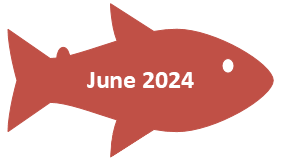
Issues Facing Chinook report review

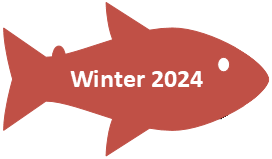
Steering Committee drafting objectives


Stock status analysis technical review




Draft Strategy approved by Fisheries and Oceans Canada, First nations' Governments, and Government of Yukon


Strategy endorsed by Minister of Fisheries

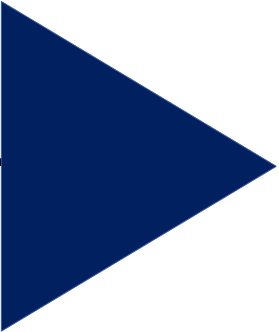
Implement Strategy actions and recommendations to rebuild Yukon River Chinook salmon
Integrated Rebuilding Unit (IRU):
Identified as a priority salmon stock under PSSI requiring a rebuilding plan
FSP:
Proposed as a Major Stock under Fish Stocks Provisions of the Fisheries Act
Integrated Planning for Salmon Ecosystems (IPSE):
Yukon River watershed identified for development of PSSI Integrated Salmon Ecosystem Plan
Yukon First Nations developing salmon plans independently

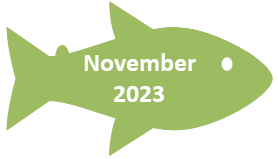
Workshop 1 – Building partnerships and consensus on one plan approach
Develop Steering Committee


DFO & ADFG 7-Year Moratorium (Not included in this work)

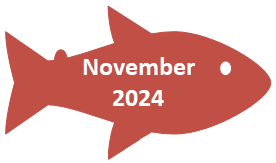
Workshop 3 – Clarifying objectives and identifying trade-offs


Workshop 4 – Confirming objectives and prioritizing actions

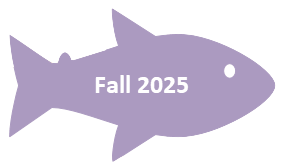
Prescribed as a Major Stock under Fish Stocks Provisions of the Fisheries Act, regulatory requirements begin (expected)
WORKSHOP 5:
Confirming actions and review draft Strategy
Fishery Science Advice Report finalized
Salmon Celebration (expected)


Public comment period

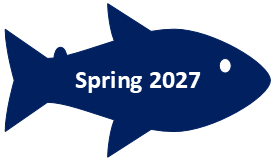
Strategy endorsed by Minister of Fisheries
Spring 2023:
- Yukon River Chinook are identified as a priority salmon stock under PSSI requiring a rebuilding plan.
- Yukon River Chinook are proposed as a Major Stock of Concern under Fish Stock Provisions of the Fisheries Act.
- Yukon River watershed is identified for development of PSSI Integrated Salmon Ecosystem Plan
June 2023:
Proposal to combine rebuilding plans under Fish Stock Provisions and PSSI integrated rebuilding and ecosystem planning into one Yukon River Chinook Rebuilding and Ecosystem Strategy
November 2023:
- Proposal to combine rebuilding plans under Fish Stock Provisions and PSSI integrated rebuilding and ecosystem planning into one Yukon River Chinook Rebuilding and Ecosystem StrategyWorkshop 1 – Building partnerships and consensus on one plan approach
- Develop Steering Committee
March 2024:
- Workshop 2 – Issues Facing Yukon Chinook report and Action While Planning working groups formed. Groups include Habitat Data and Monitoring, Raising the Profile (Communications), Marine Issues, Regulatory (Habitat Protection).
- Habitat Data and Monitoring: Undertake habitat data and research activities, specifically focused on identification of juvenile salmon overwintering habitats, standardization of temperature monitoring, and identifying cold water refugia.
- Marine Issues: Understand impacts affecting Yukon River Chinook salmon in the marine environment and governance of the Bering Sea.
- Raising the Profile (Communications): Identify opportunities for stewardship, outreach, and education on Yukon River Chinook salmon.
- Regulatory (Habitat Protection): Review relevant regulatory and policy mechanisms for the protection of salmon and salmon habitat to identify areas of improvement.
- Reviewed draft evaluation of Issues Facing Yukon River Chinook Salmon
- Explored ways to include Traditional Knowledge
April 2024:
DFO & ADFG 7-Year Moratorium (Not included in this work)
June 2024:
- Proposal to combine rebuilding plans under Fish Stock Provisions and PSSI integrated rebuilding and ecosystem planning into one Yukon River Chinook Rebuilding and Ecosystem StrategyIssues Facing Chinook report review
- Link to Summary of Issues Facing Yukon River Chinook
November 2024:
Workshop 3 – Clarifying objectives and identifying trade-offs
Winter 2024:
Steering Committee drafting objectives
March 2025:
- Workshop 4 – Confirming objectives and prioritizing actions
- Link to Brendan Connors work on DFO’s Canadian Science Advisory Secretariat (CSAS) process to evaluate stock status and biological and fishery consequences of alternative harvest and rebuilding actions for Yukon River Chinook salmon.
Summer 2025:
Stock status analysis technical review
November 2025:
Workshop 5 – Confirming actions and review draft Strategy
Spring 2026:
EXPECTED PRODUCTS
- Canadian-Origin Yukon River Chinook Salmon Stock Rebuilding and Ecosystem Strategy
- Summary of Issues Facing Canadian-origin Yukon River Chinook Salmon Report
- Traditional Knowledge Guidance document
Key Takeaways
- A rebuilding stock target will be co-developed by the Steering Committee with DFO Science staff as part of the Strategy. The stock target will include targets for productivity and spawner quality (e.g., size, age composition, amount of eggs) and have associated metrics of success.
- The stock target will help achieve a holistic rebuilding goal and be informed by objectives developed through the rebuilding planning process, and western and traditional science.
- The Strategy will speak to both Western and Traditional science; e.g. how many salmon (Western science) does it take to make spawning grounds red with salmon or have fish camps filled with laughter (Traditional science).
Draft objectives for the Strategy have been collaboratively developed, and provisionally grouped into the following categories:
- Overall abundance
- Enough Chinook for People
- Enough Chinook for Themselves
- Enough Chinook for the Ecosystem
- A Healthy Ecosystem that Supports Chinook
As part of the process, collectively we need to:
- Maintain frequent and consistent communication to ensure all participants are familiar with the process, aware of the progress made, and understand upcoming steps;
- Fill critical knowledge gaps for the Yukon River ecosystem, its salmon habitat, and stressors on Yukon River Chinook salmon;
- Review the effectiveness of regulatory protections for salmon in Yukon;
- Keep people thinking and caring about Chinook salmon through outreach, engagement and promotion;
- Clearly articulate shared objectives and identify pragmatic actions; and
- Incorporate local knowledge and foster a sense of collective ownership.



.svg)
